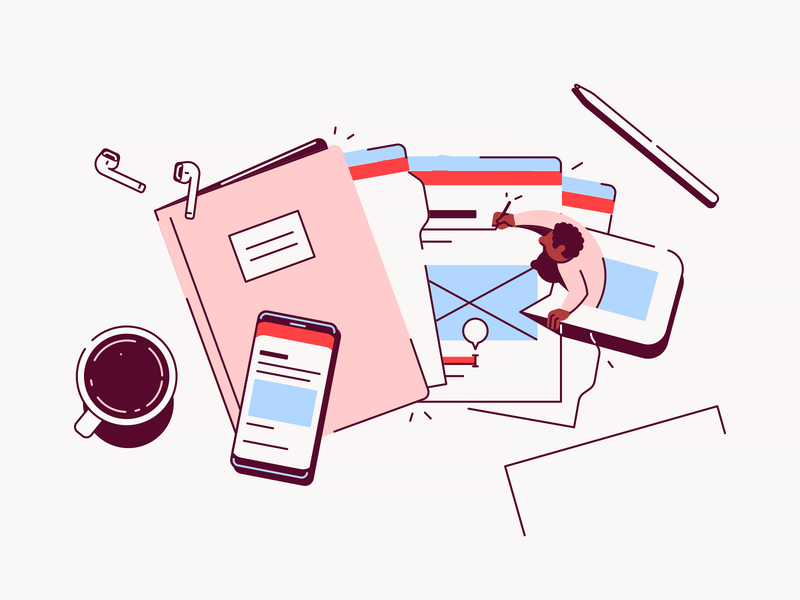How to draft a Project Proposal
A professional project proposal will work as the framework for a concept that can be rendered into reality. Project proposals will accomplish several major tasks en route to becoming a marketing document for stakeholders. The more elaborate a project proposal is, the easier it will be for an organization to accept the project.
While you can approach your project proposal in an infinite number of ways, we found the following outline to be most effective.
1. IDENTIFY A PROBLEM
A project proposal should identify a problem that you have the unique ability to fix. This problem could manifest in several different forms. Does your project help the company save money? Does your proposal offer an opportunity for growth? If you want to learn how to start your proposal out with a strong introduction, consider reading this writeup from YourDictionary.
Pro tip: Start strong. If you can’t adequately identify the problem that your proposal solves, don’t move onto the next step. Decision-makers don’t need to have patience, so don’t test them early.
2. SHOWCASE YOUR SOLUTION
After you’ve identified a problem that can be fixed, now is the time to showcase your solution. If you are working with a company to assist in their re-branding efforts, you might showcase logo designs that send a different message. Whatever your topic is, your solution must be simple, clear, and ready for examination.
Pro tip: Prepare ahead of time for any questions your client may have. Be ready to defend your proposal from multiple angles while explaining how you can solve your client’s problem. Stick to facts, avoid hyperbole, and blow them away with how prepared you are. According to the U.S. Bureau of Labor Statistics, there is a 3% projected growth in the graphic design industry over the next decade. If you can’t sell your proposal, someone else will!
3. DEFINE PROJECT CRITERIA
Now that you’ve identified a problem and showcased the benefits of your solution, it is time to outline your project criteria. For this section of your project proposal draft, you need to identify a delivery date as well as what your deliverables actually are. If you are developing a website, you should have a concrete launch date. If you are developing a series of branded images, you should outline what files you will send.
Pro tip: Follow S.M.A.R.T. goals when developing your project criteria section. S.M.A.R.T goals are Specific, Measured, Acquirable, Realistic, and Time-Based. You can read more about the effectiveness of S.M.A.R.T. goals with this overview .
4. EDIT UNTIL PERFECTION
Rome wasn’t built in a day and neither was your project proposal. Drafting a project proposal should take time and effort. If you think that you are done, run the proposal through your favorite grammar and spelling editors before proofreading your proposal again. If you lack the budget to hire a professional editor, consider using a platform like Grammarly for free basic editing.
Pro tip: You can pen a project proposal that is 99% perfect that still fails. Why does this happen? Decision-makers can be turned off by even minute mistakes. All it takes is a typo at the beginning of your proposal to shut down your project. Edit and edit again!
5. USE DIGITAL SIGNATURE
After your draft proposal is edited and submitted, you should be ready to sign documentation. As we are living in a fast-paced world that is driven by instant deliverables, you need to be ready to sign off on documents in the blink of an eye.
Pro tip: Consider using a tool like ApproveMe’s WP eSignature. This online contract-signing tool allows users to build custom contracts that are singable through WordPress.
Now that you understand the basic steps to drafting your first project proposal, it is time to look at potential issues that you must avoid.
7 Project Proposal mistakes to avoid
According to a study developed by Colour Works, more than 43% of adults find bad grammar unappealing. When we combine this statistic with the importance of a quality first impression, it is easy to see how a single mistake can derail an entire project proposal. If you want your project proposal to succeed, avoid the following mistakes during your drafting process.
1. NEVER DOUBT YOUR ABILITIES
Zachary Estes and his partner Sydney Felker performed a series of psychological experiments with the Mental Rotations Test (MRT). This test revealed that confident people were far more accurate than their less confident counterparts. Why do we bring this up? Your project proposal must embody your confidence and this means never doubting your abilities. Prospective clients are looking to hire experts to carry out their vision, so be the confident expert that they demand!
2. DON’T FOCUS SOLELY ON COST
While cost is the ultimate bottom line, it should not be the focus of your project proposal. Cost and payment should be mentioned, yes, but that shouldn’t influence the tone of your text. Rather than focusing on cost, you should instead focus on the value that your project proposal creates. By shifting attention to value ahead of cost, you can reach your clients via positivity instead. This would be a great place to reference successful projects from your past as well as the value they might have created for previous clients.
3. AVOID ANY VAGUE LANGUAGE
Consider your project proposal like it was a blueprint for a machine. A vague blueprint will lead to construction errors that will ultimately hamstring your operation. In order to construct a functional machine, avoid any vague language. Your client will want to see definitive milestones, expenses, payment terms, and value benefits.
4. REMEMBER YOUR CALL TO ACTION
As your project proposal is itself a call to action, your language must echo this sentiment. Your project proposal needs to showcase clear milestones that will propel your efforts forward. Make sure that you include contract proposals, follow-up information, and even an estimate to spur your client toward action. If you send a proposal to a client and have yet to hear a response, consider sending a follow-up message after a day or two.
5. CLARIFY ALL BUDGETARY CONCERNS
If you want a project proposal that leads to a successful outcome, you cannot forget to clarify all budgetary concerns. As the economy has often performed like a yo-yo in recent years, organizations are more cognizant than ever regarding their expenses. Sudden and surprising bills can derail a project, but these expenses can be handled with grace if you remember to forecast for them. Outline your budget as well as potential expenses within your project proposal.
6. DON’T LET YOUR PITCH SOUND GENERIC
Whether you are pitching a website re-design or trying to earn a new client for your marketing firm, your proposal must be as unique as you are. Consider the fact that these businesses are often seeing hundreds of proposals for a single project. What sets you apart? What makes your work that much better than your competitors? A generic proposal will often lead to a generic rejection. Aim for exceptional!
7. DON’T OVERSTAY YOUR WELCOME
The perfect project proposal is like a great meal. The proposal should be visually pleasing, perfectly balanced, and just the right size so that you don’t feel over-stuffed. Get straight to the meat-and-potatoes of your project proposal instead of wasting time with fluff and preamble. Cater directly to the needs of your client while highlighting your unique talent and project outline.
There has never been a better time to start working on your next project proposal. While you might be working with a different client every other week, your project proposal efforts will always follow a similar pattern. You can pre-craft much of your project proposal before acquiring a client. Don’t wait until the last minute to prepare for your future, start working on the perfect project proposal, today!





